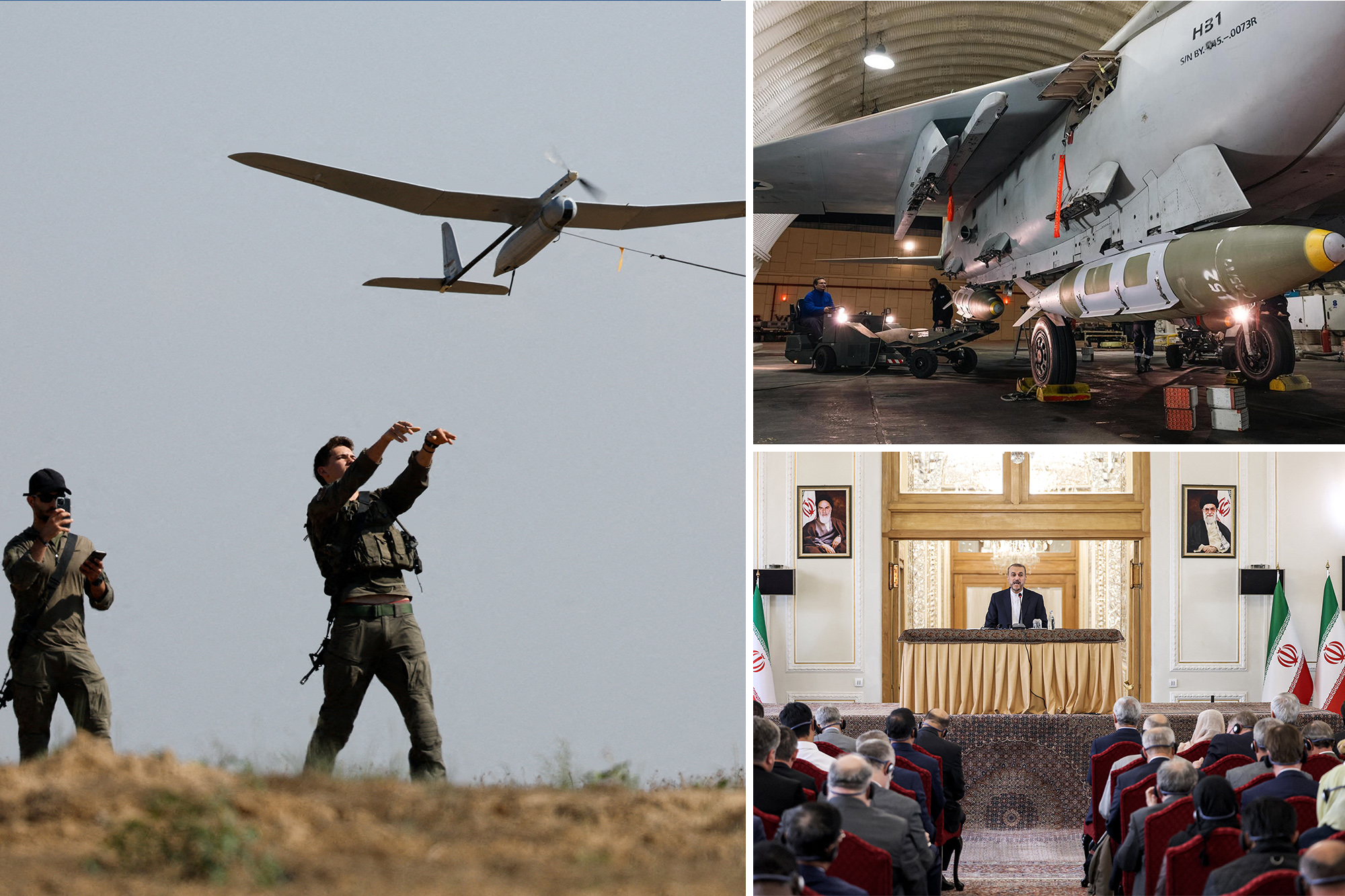
Israel’s strike on a military base near an Iranian nuclear site early Friday reportedly used a missile equipped with technology that avoided Tehran’s radar detection systems — and was meant to send a message to Islamic republic against any future direct attacks on the Jewish state.
The attack Friday on an airbase near the Iranian city of Natanz, which is vital to Iran’s secret nuclear operations, demonstrated Jerusalem’s ability to evade and destroy Tehran’s defenses, two Western officials told The New York Times.
This week’s aerial assault came in response to Iran’s barrage of over 300 drones and missiles on Israel April 13, almost all of which were intercepted and ultimately caused minimal damage.
An Israeli weapon struck an S-300 anti-aircraft system at a military base in the province of Isfahan, two Iranian officials told The Times.
Satellite imagery viewed by the outlet showed damaged radar at an S-300 system at the Eighth Shekari airbase in Isfahan, which is tasked with protecting the Natanz nuke site.
“The Israelis hit what they intended to strike,” a US senior military official told Fox News.
The attack involved drones and at least one missile, the Western and two Iranian officials told The Times, none of which were detected entering the Islamic republic’s airspace.
The missile reportedly was fired from an Israeli warplane far away from Israel and Iranian airspace, and avoided Jordanian airspace in an effort to keep Amman out of the conflict, the Western officials said.
Iran, however, downplayed the attack’s scale, with Iranian Foreign Minister Hossein Amirabdollahian claiming to NBC News that drones used in the strike were “more like toys that our children play with – not drones,” and making no mention of a missile strike nor damage to the base.
Iran state media dismissed the attack, claiming a small number of explosions were the result of its air defense system taking out three drones over Isfahan and the operation was carried out by “infiltrators” rather than Israel.
Experts told The Times that the recent tit-for-tat attacks could have long-term ramifications for the two regional enemies, who may now feel emboldened to attack one another’s territory directly, a long verboten practice.
They also warned Israel’s undetected strike could spur Iran to bolster protections for its nuclear program by driving its facilities further underground, or move its weapons closer to the Jewish state in case of future conflicts.
A controversial Israeli politician, however, seethed that his nation’s strike didn’t go far enough in punishing Iran for its first ever direct attack on the Jewish state.
Itamar Ben-Gvir, Israel’s far-right national security minister, blasted Israel’s operation as “lame” in an X post, prompting blowback from lawmakers and even officials in Prime Minister Netanyahu’s inner circle.
Iran’s attack last week was sparked by Israel’s April 1 airstrike on an Iranian diplomatic compound in Damascus, Syria, which killed seven Islamic Revolutionary Guard Corps members, including two top commanders.
In other developments:
- The Israel Defense Forces said Saturday its troop killed 10 militants and arrested eight wanted Palestinians during a two-day raid on the Nur Shams refugee camp in the West Bank, The Times of Israel reported.
- An explosion at a military base belonging to the Popular Mobilization Forces, a coalition of Iran-backed armed groups, killed one person and injured eight, according to Iraq’s Security Media Cell. Iraqi officials said they were investigating the blast. The United States denied involvement in any attack.














